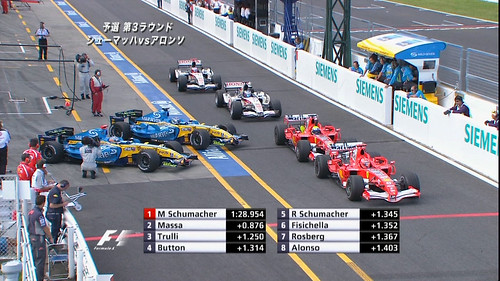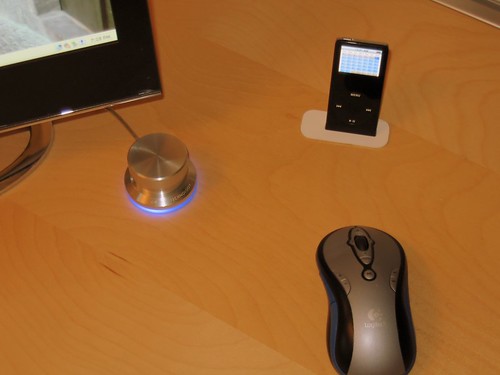
It’s not just the holiday season. With just more than 13 months to go until U.S. broadcasters shut off the analog, and with the increasing proliferation of HDTV broadcasting, the race is on between cable and satellite television providers to convince consumers that their product will give them the most bang for the buck.
One of the primary selling points has been offering HDTV and DVRs, long favored by the satellite TV marketers as their value-added proposition. Cable has been favoring "triple play" — bundling digital TV, IP phone, and internet into one package.
For the time being, it seems that cable/sat TV divide is likely to remain in place, as the new owners of DirecTV believe the period of rapid growth for triple play has passed:
Liberty Media CEO Greg Maffei said Monday that DirecTV Group’s strategy of concentrating on video services – primarily HDTV – apparently seems to be working and when his company takes over control of the satellite TV giant later this year, there won’t be a big change in strategy….
When LGreg Maffeiiberty agreed to take control of the satellite TV giant, there was speculation that the Denver-media conglomerate would invest heavily in bringing a wireless high-speed data product to DirecTV. But at the UBS Securities Media & Entertainment conference Monday, Maffei seemed to downplay the need for a high-speed Internet play.
Maffei credited DirecTV’s current management team, which has differentiated the product from cable and telco offerings by focusing on HDTV content and high-end digital video recorders. Their success was proven in the most recent quarter, where DirecTV added about 240,000 customers.
While Maffei admitted that the triple play bundle of voice, video and data may have hindered DirecTV’s subscriber growth in the past, that time appears to have gone by. That, he said is backed up by the recent basic subscriber losses at the larger cable companies.
“Most of the growth in voice and data has already occurred; that is why you’re seeing slowing growth rates for the cable guys,” Maffei said. “By concentrating and differentiating around content and HD and the TV experience, DirecTV has been able to find a customer set that enjoys that product and reaches for that product.”
The early adopters, it seems, have all chosen their path; now the marketplace is focusing on picking up the rest of the subscribers — and the competition is fierce. DirecTV and Dish are matching each other’s offers, though DirectTV has a leg up in its HDTV offerings, providing 85 HDTV channels to Dish’s 34. (On the cable side, the score is this: Cablevision has 42 HDTV channels, including all New York Metro local sports in HD for free, while Comcast has 44 and TimeWarner offers approximately 30.)
Another channel sparking demand for direct-to-home satellite TV is RFD-TV, which bills itself as "Rural America’s Most Important Network" and is the new home of the "Imus in the Morning" video simulcast. RFD-TV is one of the 285+ video channels available on IP-PRIME, the IPTV service built for small and mid-size telcos.
Meanwhile, the cable guys clearly disagree with Maffei’s observation that triple play’s heyday of growth is behind them; they feel triple play remains underpenetrated.
But will a new "quadruple play" — adding wireless cell coverage to cable’s triple play offering — shake up the marketplace? TimeWarner and Comcast are opting out of bidding for the new wireless spectrum being made available by the end of analog, but Cox is in:
Cox Communications Inc. said Monday it plans to bid in an eagerly anticipated auction of wireless spectrum, likely making it the lone major cable operator to take part.
Parties must indicate Monday if they want to participate in next month’s auction for wireless spectrum, which can be used for cellphone service or new mobile-Internet technologies.
Companies such as Google Inc. and Verizon Communications Inc. are expected to bid billions of dollars to capture the valuable slices of airwaves.
Cox… and characterized the move part of its push towards mobility and convergence of its services. "We like having options," said David Grabert, a Cox spokesman. With other cable operators, Cox bought wireless spectrum in a separate government auction last year.
The company, a unit of Cox Enterprises Inc., has more than 6 million customers nationwide.
So in the end, how will it all shake out? Will one bundle become the VHS to another Betamax? Unlikely, but time will tell.









 The NASA website has
The NASA website has 